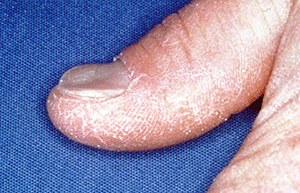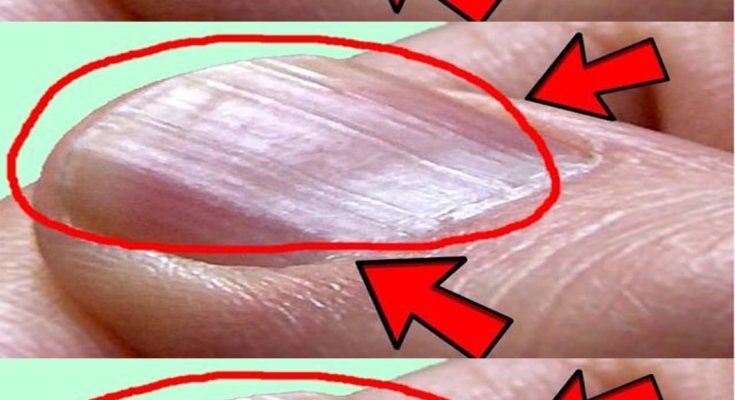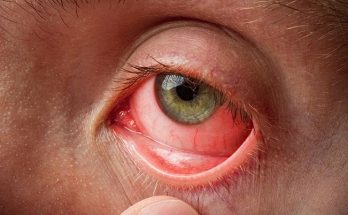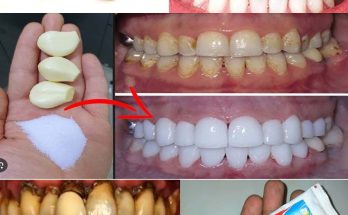It’s possible that we’ve looked at our hands and noticed some lines on our nails.
This almost always sparks curiosity and makes us wonder: Why do they appear? What can be done to make them go away? Lines on the nails can be a sign
that we’re not eating as well as we should or that we might need to take better care of our health, among other things. Below, we’ll explain more about why these lines appear on nails, how they can be removed, and some useful tips to prevent them from appearing in the future.
Clubbing

Clubbed fingernails also affect the fingertips. As the nails curve downward, the fingertips begin to swell and cause discomfort. This shift may not be noticeable since it can evolve over time. “Generally, red or purple lines under your nails are due to an injury. But if you notice these and don’t recall injuring your nail, you might want to book a doctor’s appointment because these can be a symptom of heart disease,” says Shah.
“Clubbing can also be a suggestion of heart disease, a major cause of death worldwide. This is where the nail curves over rounded fingertips or the ends of the toes, resulting in a bulbous appearance. Other symptoms that indicate heart disease include extreme fatigue, swollen ankles and pain in the chest, stomach, legs, arms, jaw or back.” Keep in mind that some people’s natural fingernails look clubbed.
Read More: Wash Your Hands Immediately After Touching These 10 Things
Spooning

“Spoon-shaped nails that curve inwards can be a sign of iron-deficiency anemia,” says Dr. Shah. “This condition is common after pregnancy and is where the level of iron in your blood is too low. Other symptoms include tiredness, shortness of breath, pale skin and headaches.” Iron deficiency could also occur because of lack of proper nutrition, celiac disease, or digestive issues.
“It’s important to identify the cause of iron deficiency anaemia so book an appointment with your GP if you have any concerns. Your GP may recommend a blood test to check your red blood cell count.” Fortunately, it’s relatively easy to treat anemia by eating iron-rich foods and taking iron supplements.
Pitting or denting

“Small dents or pits on the surface of the nails are common in people with skin disorders such as psoriasis, eczema and alopecia areata (a specific type of hair loss),” according to Dr. Shah. “You’d expect other outward symptoms. For example, psoriasis typically causes dry, scaly patches of skin, while eczema causes the skin to become dry, itchy, cracked and sore. Alopecia areata involves patchy hair loss.”
A dermatologist could diagnose the cause of these indentations in the nails. For mild cases where the pitting is causing no discomfort, no treatment is usually needed. Some cases are treated with topical or injected corticosteroid and vitamin D3, often alongside treatment for the underlying condition causing it.
Read More: Nail Fungus: Symptoms, Treatment, and Home Remedies
Melanoma

Many people are aware that cancer can appear as abnormal spots on their skin. But melanoma, the most serious type of skin cancer, could also occur on fingernails or toenails. So if you notice a dark streak down a nail, refer to a dermatologist. A dark line isn’t always caused by cancer but it’s worth an examination because melanoma may be easy to treat if caught early.
Terry’s nails

“Named after the doctor who discovered the symptom, Terry’s nails is a nail condition where over two-thirds of the nail bed becomes white except for a red or pink strip at the nail tip. Terry’s nail is a tell-tale sign of liver disease,” says Dr. Shah. “Other symptoms of the disease include fatigue, yellow skin and loss of appetite.” Terry’s nails could also occur as part of the natural aging process, or signs of other serious conditions such as heart disease and diabetes.
Yellow nails

There are many causes of yellow nails but the most common one is a fungal infection. This can lead to the nail bed retracting as the nails thicken and crumble. It may take some time to treat the infection but it’s often not painful. However, in rare instances, yellow nails could be symptomatic of diabetes, psoriasis, thyroid disease, and lung disease.
Read More: What Is Lunula? Your Lunula, Fingernails, and What They Say About Your Health




